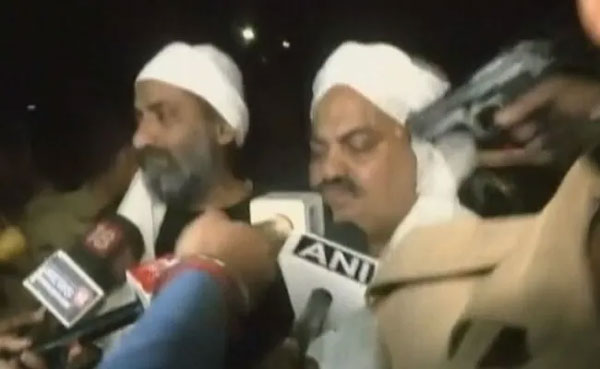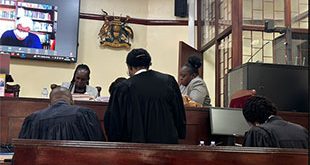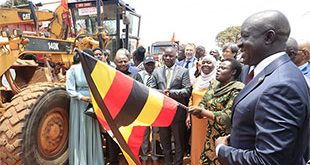
New Delhi, India | SHASHI THAROOR – PROJECT SYNDICATE | Last month’s murder, on live television, of the notorious gangster and former member of India’s parliament Atiq Ahmed has triggered anguished debates about how such an event could happen in a modern democracy. Along with the killers, who were apprehended on the spot, India’s entire criminal-justice system is now being put on trial.
On the fateful day, the police had taken Ahmed from the high-security prison where he was serving a life sentence for kidnapping – and awaiting trial for 100 more pending cases, with charges ranging from extortion to murder – for a medical examination. Exiting the police van at the hospital gates, the handcuffed Ahmed was besieged by television cameras and journalists shouting questions at him. Three of those “media personnel” pulled out guns and shot him dead, along with his brother, at point-blank range. Cameras whirred as the victims hit the ground.
The murder left most citizens shocked. But many applauded, particularly in the state of Uttar Pradesh, where it occurred.
The blogger Avay Shukla was horrified by the celebrations. “No sane democracy,” he wrote, “would have demonstrated the putrid reaction Indian society did to these murders: Ministers hailing the deliverance of ‘divine justice,’ WhatsApp groups and Twitterati exulting at the death of a ‘Mafia don,’ celebrations across [resident welfare associations] and India’s vaunted and vacuous middle-class strata.”
This response is all the more dismaying given the widespread belief that the police were complicit in the killings. After all, they chose to stop the van outside the hospital gates, rather than drive through them and up to the door of the building. The media were alerted to Ahmed’s impending visit, and were allowed to crowd around him. The assailants seem to have had reason to expect that, if they dressed as journalists, they would be able to get close to their targets. And the police escort made no apparent effort to shield Ahmed from the media scrum, let alone from the bullets.
A police-assisted assassination would be bad enough. But the problem runs deeper. The real indictment of India’s criminal-justice system lies in the likely motivations for aiding – or celebrating – such an act.
Uttar Pradesh was long reputed to be a haunt for gangsters and violent criminals, who leveraged their muscle to gain political clout. Kidnapping and extortion, “land grabs” (the sequestration, often at gunpoint, of someone’s property), corruption and intimidation of government officials, and murder had all become part of the state’s landscape.
Such lawless conduct was facilitated by local political powers. The state’s leading parties granted gangsters “tickets” to contest – and usually win – elections, and a slow and inefficient justice system, marked by the apparent inability of police and prosecutors to mount credible cases against wrongdoers, allowed criminality to fester.
It was against this backdrop that Uttar Pradesh’s ruthless chief minister, Yogi Adityanath, rose to power in 2017. A representative of the ruling Bharatiya Janata Party (BJP), Adityanath has made it his mission to crush the mafia by any means necessary. And, as his admirers point out, he has delivered. But while crime rates are down, India is paying a high price for the Adityanath administration’s contempt for the rule of law. Since Adityanath took power in Uttar Pradesh, the police there have killed 183 alleged criminals.
After Ahmed’s gruesome public murder, Adityanath vowed to grind “all mafias into dust.” Coming from a leader known for dispensing “bulldozer justice” – including literally bulldozing the homes of dissenters and protesters with no due process – it is an ominous pledge. But for citizens living in thrall to gangsters, it appears also to be a comforting one.
The shortcomings of India’s criminal-justice system extend far beyond Uttar Pradesh. Just last month, the 69 defendants accused of perpetrating the 2002 Naroda Gam massacre in Ahmedabad were all acquitted. In March, the four people charged in the Jaipur bombings that killed 71 and injured 185 in May 2008 also were acquitted. Both cases represent a double failure: the victims have been denied justice, and the acquitted have spent years in jail.
Cases collapse not because a liberal judiciary is itching to set wrongdoers free, but because the evidence does not meet the legal standards needed to convict. This partly reflects police shortcomings. In northern states like Uttar Pradesh, police are known for conducting shoddy investigations, fabricating evidence, and displaying a general lack of professionalism.
Moreover, witnesses are often poorly prepared to testify and, unable to count on effective police protection, become vulnerable to bribes or intimidation. And, because cases can drag on for years or even decades, witnesses may forget key details or even die before trial.
There are structural reasons for these failures. Many police, especially at lower levels, have received no additional training since their induction and rely on outdated investigation techniques and evidence-collection protocols. The judiciary follows archaic colonial-era procedures, which no one wants to take responsibility for revamping. And, in states like Uttar Pradesh, politicians and the accused are often associates – or the same people.
Every time a high-profile criminal case collapses, there is renewed clamor for vigilante justice. But what is really needed is deep reform – of police forces, the judiciary, and the political system. In Uttar Pradesh and beyond, Indians face a simple and stark choice: the rule of law or the law of the jungle.
****
 Shashi Tharoor, a former UN under-secretary-general and former Indian Minister of State for External Affairs and Minister of State for Human Resource Development, is an MP for the Indian National Congress. He is the author, most recently, of Ambedkar: A Life (Aleph Book Company, 2022).
Shashi Tharoor, a former UN under-secretary-general and former Indian Minister of State for External Affairs and Minister of State for Human Resource Development, is an MP for the Indian National Congress. He is the author, most recently, of Ambedkar: A Life (Aleph Book Company, 2022).
Copyright: Project Syndicate, 2023.
www.project-syndicate.org
 The Independent Uganda: You get the Truth we Pay the Price
The Independent Uganda: You get the Truth we Pay the Price



